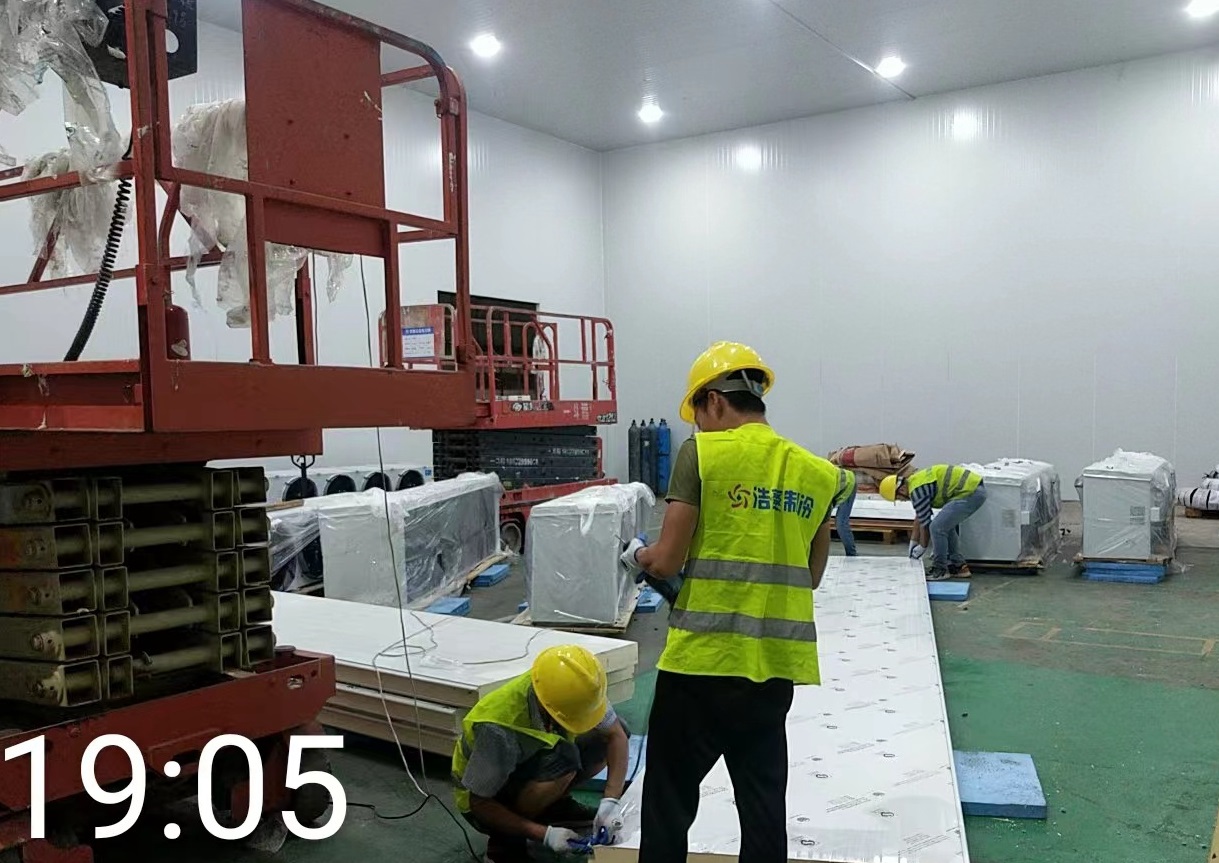Quando os clientes perguntam sobre a construção de um armazenamento no freezer, As perguntas mais comuns são: “What’s the total cost?” e “Quanto por metro quadrado?” Ao contrário de produtos padronizados, freezer storage costs have no fixed price. The final quote is a comprehensive sum of various components, including refrigeration units, insulation panels, piping, electrical wiring, and valves. Variables such as storage size, temperature requirements, and equipment brand choices significantly impact the overall cost.
It’s important to note that freezer storage costs aren’t typically calculated by square meter. Regardless of size, essential components like insulation panels, compressors, and cooling fans are required. Smaller freezers often have a higher cost per square meter compared to larger ones, as the latter benefit from economies of scale. Accurate pricing can only be determined after on-site inspections by engineers, who then create detailed design plans. Below are the key factors influencing freezer storage costs:
1. Storage Compartmentalization
Most freezer storages feature multiple compartments, categorized either by temperature or function. Temperature-based categories include constant temperature storage, refrigerated storage, freezer storage, and quick-freeze storage. Function-based categories cover pre-cooling rooms, processing areas, quick-freeze tunnels, and storage rooms. Different applications demand distinct configurations and compliance standards. For example, pharmaceutical freezers require backup systems and must comply with Good Storage Practice (GSP) certification. Chemical storage facilities need explosion-proof features, while food factories often require dedicated processing spaces.

2. Refrigeration Units
The compressor, the heart of the refrigeration system, directly affects the freezer’s performance. Opting for high-quality, reliable compressors is crucial. Well-known brands like Bitzer (Germany), Copeland (USA), and Fusheng (Italy) offer superior quality but come at a premium compared to other brands.
3. Storage Capacity
Capacity is determined by the quantity and volume of stored goods. Since different products have varying densities and packaging methods, space utilization differs. Larger capacities not only increase construction costs but also impose stricter requirements on refrigeration units.
4. Insulation Materials
Bigger freezers demand more insulation panels, increasing construction complexity and costs. Higher-quality insulation materials, while more expensive, enhance energy efficiency and long-term savings.
5. Temperature Requirements
Lower target temperatures or faster cooling speeds significantly raise costs. Freezers with stringent temperature control needs require more advanced equipment and precise engineering.
6. Geographical Location
Remote construction sites incur additional labor and transportation costs. Long distances from suppliers or urban centers can substantially impact the overall budget.
In conclusion, building a freezer storage involves complex cost calculations. For an accurate estimate tailored to your needs, consult our professional engineers for a detailed site assessment and customized design.
 Provedor de soluções de armazenamento a frio da China
Provedor de soluções de armazenamento a frio da China
